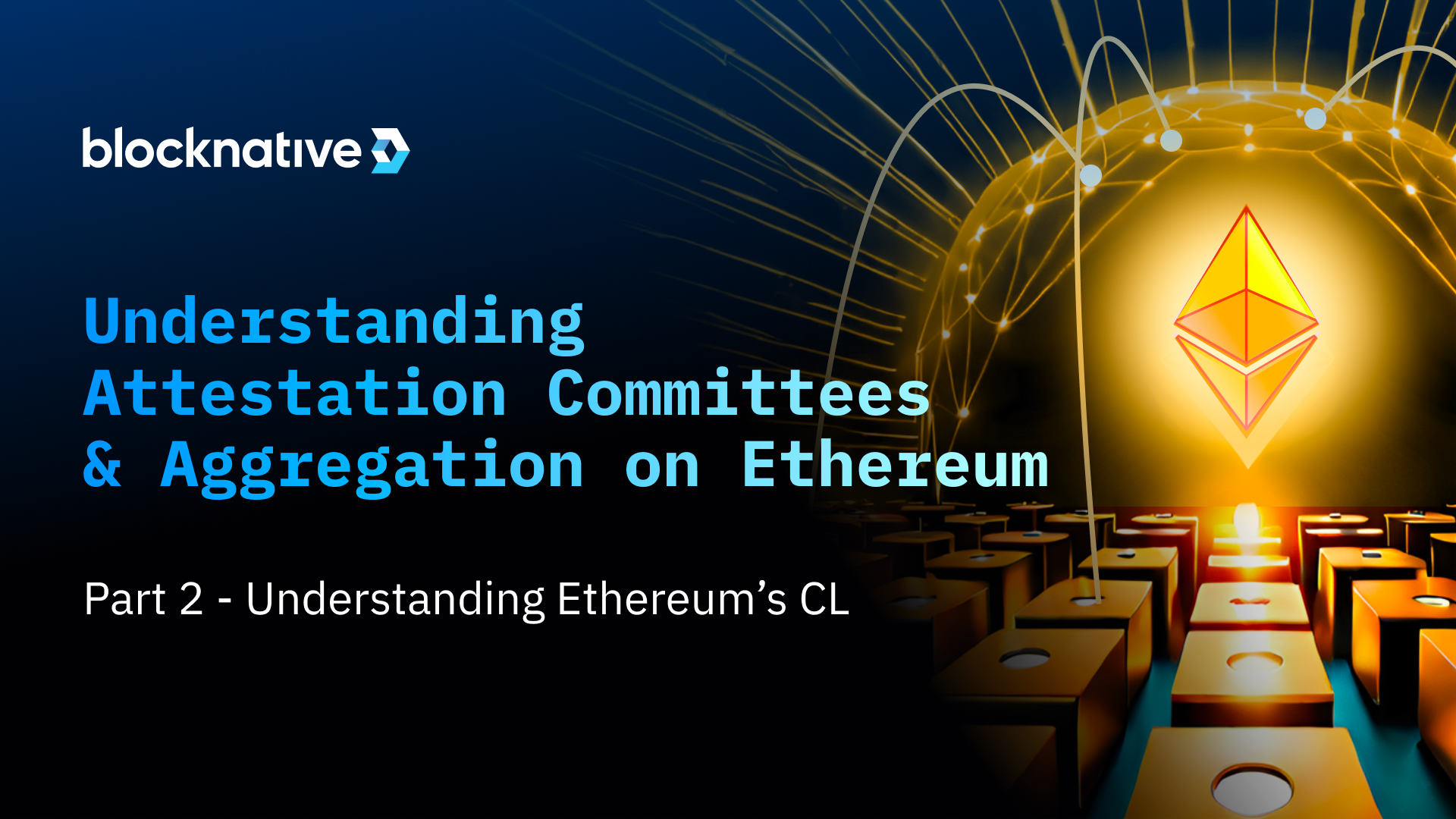In Ethereum's proof-of-stake (PoS) consensus mechanism, the process of attestation plays a crucial role in ensuring the integrity and security of the network. With the rush of new validators and node operators entering the ecosystem since The Merge, it is important to understand what exactly these validator nodes are doing beyond simply proposing blocks and validating transactions.
In this blog post, we will delve into the workings of attestation committees, the significance of attestation aggregation, and the impact of slot inclusion delays, shedding light on their importance in Ethereum's ecosystem.
What are Attestations Committees
Attestations committees are subsets of validators responsible for generating attestations in Ethereum's PoS consensus mechanism. These committees are formed at specific intervals known as slots, and each committee consists of a fixed number of validators. The composition of committees changes dynamically to ensure decentralization and prevent centralization of power within the network.
Attestations play the following role:
- Block Proposal Validation: Attestation committees play a critical role in validating proposed blocks. Validators within a committee assess the validity and correctness of a block before endorsing it through their attestations. This process contributes to the formation of consensus on the canonical chain.
- Ensuring Byzantine Fault Tolerance: The presence of multiple validators within an attestations committee enhances Byzantine fault tolerance. Byzantine faults refer to nodes behaving maliciously or failing to follow the consensus rules. By having multiple validators independently validate and attest to the proposed blocks, Ethereum ensures the resilience and security of the network.
What is Attestations Aggregation
Attestations aggregation is the process of combining multiple individual attestations into a single aggregate attestation. This aggregation optimizes network bandwidth and reduces the computational requirements for processing attestations. Ethereum leverages aggregation mechanisms such as BLS (Boneh-Lynn-Shacham) signatures to efficiently merge multiple attestations into one.
Attestations Aggregation enables:
- Bandwidth Efficiency: Aggregating attestations reduces the number of messages exchanged among validators, resulting in improved bandwidth utilization. By combining attestations, Ethereum minimizes network congestion and allows for the efficient propagation of information across the network.
- Computational Optimization: Aggregation reduces the computational burden on validators by consolidating multiple attestations into a single, computationally less intensive unit. This optimization enhances the overall performance of the network and allows validators to efficiently participate in the consensus process.
Attestation Challenges and Potential Risks
P2P overlays play a critical role in the attestation process, but they are not without challenges. Some potential issues include:
Slot inclusion delays: Attestations are crucial for forming consensus in Ethereum's PoS mechanism. Any delays can impact the speed at which consensus can be reached, as attestations must propagate through the network and be incorporated into subsequent slots. Validators generate attestations during a slot, and these attestations must be included in subsequent slots to contribute to consensus formation. Slot inclusion delays can be influenced by network latency, congestion, and the efficiency of information propagation within the P2P overlay network. Minimizing slot inclusion delays enhances the responsiveness and performance of Ethereum's consensus process.
Network Partitioning: If a subset of nodes becomes disconnected from the rest of the network due to a network partition, it can lead to inconsistent attestations and hinder consensus formation. Validators must ensure that they can communicate with a majority of nodes to maintain the integrity of the network.
A Deeper Dive
Attestations committees provide a decentralized validation process, ensuring the security and integrity of proposed blocks. Aggregating attestations optimizes network bandwidth and computational resources. Meanwhile, minimizing slot inclusion delays facilitates faster consensus formation and enhances the overall performance of the network. Understanding these components is crucial to comprehending the intricate workings of Ethereum’s consensus layer.
In Part 3 of this series we will take a deep dive into the role P2P overlays play in attestation committees and slot inclusion. For a deeper technical discussion, check out our Hitchhiker’s Guide to P2P Overlays in Ethereum. Feel free to leave a comment directly in HackMD or reach out to our team on Discord if you have any questions or want to discuss these topics further.
Gas Extension
Blocknative's proven & powerful Gas API is available in a browser extension to help you quickly and accurately price transactions on 20+ chains.
Download the Extension



